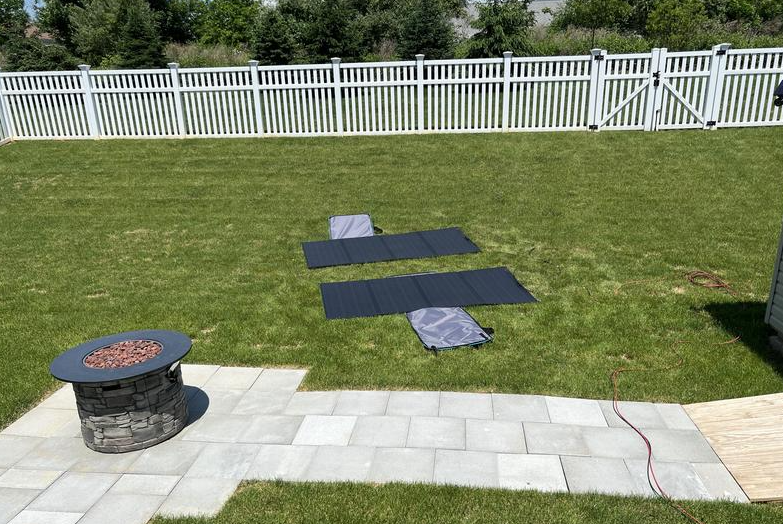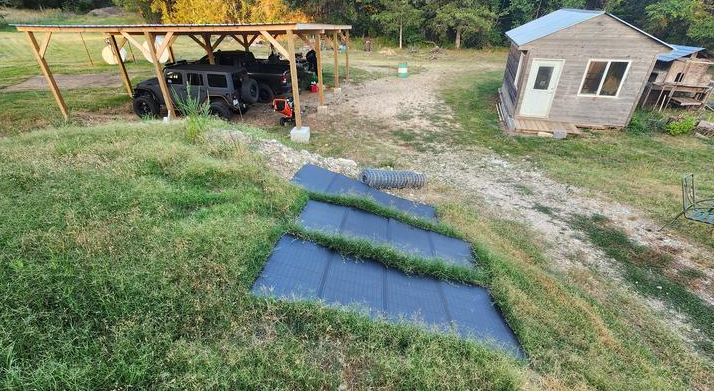Choosing Between a Central Inverter and Micro-Inverters
While solar panels get a lot of attention, the inverter is just as important. This device converts the direct current (DC) from your panels into alternating current (AC) that your home or business can use, or send to the grid. You'll face a key choice: a single, central inverter or smaller micro-inverters installed with each panel. This isn't a small decision—it affects how well your system performs, its cost, how you monitor it, its safety, and your options for future expansion. This guide will walk you through the differences to help you choose wisely.
How Solar Inverters Work: Central vs. Micro-Inverters
To make a good choice, it helps to understand the basic technologies. The main difference is where the DC electricity from your panels gets converted into usable AC electricity.
Central (String) Inverters
Central inverters, also known as string inverters, have long been the standard. In this setup, solar panels are connected in series to form "strings." These strings (one or more) deliver all their produced DC power to a single, main inverter unit, which then handles the AC conversion for the entire system. Typically, central inverters are placed near a building's main electrical panel, in a garage, or occasionally outdoors in a sheltered location. A key characteristic is that a central inverter manages power for the entire string of panels collectively. Consequently, a significant downside is that if one panel in a string underperforms (due to shading or dirt, for example), the output of all panels in that string can diminish, as the string's performance is often capped by its weakest link.
Solar Panel Micro Inverters
Micro-inverters employ a distributed conversion approach. With this technology, a small micro-inverter is installed with each individual solar panel, typically on the racking beneath it. Each unit converts DC to AC independently at the panel level. A primary advantage is that each panel benefits from its own Maximum Power Point Tracking (MPPT). This allows every panel to produce energy to its full capability, irrespective of the performance of other panels. The AC power generated by all the micro-inverters is then aggregated for use in your electrical system.
String Inverters with DC Power Optimizers
A hybrid option, string inverters with DC power optimizers, combines features from both central and micro-inverter systems. In this configuration, a small device known as a DC optimizer is attached to each panel. These optimizers condition the DC power and enable individual panel MPPT, similar to micro-inverters. However, the optimized DC power is then directed to a central string inverter for the final AC conversion. This approach offers some panel-level benefits, such as improved shade tolerance, while still relying on a central unit for the ultimate power conversion.
Important Factors When Comparing Inverters
Your choice of inverter technology will directly impact your solar investment. Let's look at the critical factors.
System Performance and Energy Output
How much energy your system produces is a primary concern, and the inverter plays a big role here.
A major performance difference appears when panels encounter shading or when panels themselves don't perfectly match in output. With central inverters, if even one panel in a string is significantly shaded or dirty, the performance of the entire string can decrease. This is sometimes called the "Christmas light effect"—where one underperforming element affects the whole series. Solar panel micro inverters and systems with DC optimizers generally handle these situations much better. Because each panel's output is managed individually, shade or soiling on one panel only impacts that specific panel. The others continue to work at their best. This often leads to more total energy produced, especially if your roof gets any shade.
The complexity of your roof also matters. Many roofs aren't simple, flat surfaces; they might have sections facing different directions or at different angles. For central inverters, designing an efficient system for these complex roofs can be tricky. Ideally, panels with different sun exposure shouldn't be on the same input channel (MPPT) of the inverter, which can lead to design compromises. Micro-inverters or optimizers are better suited for these complex roofs. Since each panel works independently, its specific orientation or tilt doesn't hold back other panels, allowing for more flexible designs that get the most out of each roof section.
Considering these points, the overall energy yield from systems with micro-inverters or optimizers is often higher over time, particularly in real-world conditions with some shading or less-than-perfect panel uniformity. While a central inverter on a perfectly clear, unshaded roof with matched panels might perform very similarly, those ideal conditions are not always constant.


System Costs: Initial and Over its Lifetime
The financial side is always important.
Upfront Equipment Cost: Central inverters generally have a lower cost per watt for the inverter unit itself. This can mean lower initial hardware costs, especially for larger systems. Micro-inverters, since you need one per panel, tend to have a higher equipment cost for the inverters.
Installation: Installation complexity and cost can vary. Central inverter systems have high-voltage DC wiring that runs from the roof to the inverter. While there's only one main unit to connect, these DC runs require careful handling. Micro-inverter systems mean more connections on the roof, but the wiring that comes down from the roof is AC, which can sometimes be simpler and require less conduit.
Lifetime Cost: This is where warranties and potential replacements come in. Central inverters often have warranties of 10-15 years. Since solar panel systems are built to last 25 years or more, you might need to replace a central inverter at least once. Micro-inverters and DC optimizers frequently come with 20-25 year warranties, which is more in line with the panels themselves. This can mean lower long-term costs.
System Monitoring and Diagnostic Capabilities
Knowing how your system is doing and quickly finding any problems is key. Systems with central inverters usually offer system-level or sometimes string-level monitoring. This is good for seeing overall production, but if one panel is underperforming, it can be hard to pinpoint which one without manual checks.
Micro-inverters and optimizers typically provide panel-level monitoring. This means you can see the performance of each individual panel, making it much easier to spot issues with a specific panel or its associated device.
Reliability and System Maintenance
How reliable your inverter is affects how much power your system generates. A central inverter is a single point of failure. If it stops working, your whole system stops producing power until it's fixed or replaced.
With micro-inverters, if one unit fails, only that single panel stops producing. The rest of the system keeps working. While replacing a micro-inverter means getting access to the roof, the overall system uptime is usually better.
Electrical Safety and Design Considerations
Electrical safety is crucial. Central inverter systems have high-voltage DC wires running from the roof to the inverter. If this wiring is damaged, it could be a risk. Because of this, rapid shutdown devices are often required by electrical codes to quickly de-energize these wires in an emergency.
Micro-inverters convert DC to AC right at the panel. This means there's no high-voltage DC wiring running across your roof or into your building (beyond the panel itself). The wiring from the combined micro-inverters is standard AC. This design often meets rapid shutdown requirements more easily and is considered by many to be an inherently safer approach.
Scalability and Future System Expansion
Your energy needs might change, so think about whether you might want to add more panels in the future.
Expanding a system with a central inverter can be tricky. The inverter has a maximum capacity, and you have to configure strings to match its voltage and current requirements. Adding more panels might mean the inverter is too small, requiring a new or additional one. Micro-inverter systems are easier to scale. You can usually add new panels, each with its own micro-inverter, without much trouble, as long as your home's electrical panel can handle the extra power.
Appearance and Noise
While function is most important, these aspects might matter to some. Central inverters are typically boxes mounted on a wall and can sometimes produce a soft hum. Micro-inverters are installed under the panels, so they're not visible, and solar generators don't make noise that you can hear from the ground.
How to Decide Which Inverter Technology Suits You
Now that we've covered the differences, let's think about which type of inverter is a better fit for different situations.
When Central (String) Inverters Are Often a Good Fit
A central inverter can be a solid, cost-effective choice if:
- Your roof is large, gets full sun all day (no shade from trees, chimneys, etc.), and all panels will face the same direction at the same angle. In this case, the main benefits of micro-inverters (like handling shade) are less important.
- Your main goal is the lowest possible upfront cost.
- You're planning a ground-mounted system where panels are easy to access and shading isn't an issue.
When Solar Panel Micro Inverters (or Optimizers) Are Often Preferred
Micro-inverters or systems with DC optimizers tend to be better if:
- Your roof has issues with shade, even if it's only at certain times of the day. As discussed earlier, these systems handle shade much better.
- You have a complex roof with multiple sections facing different directions or at different angles.
- You want to get the absolute most energy possible from your system and value being able to see how each panel is performing.
- You think you might want to add more panels to your system later on.
- Enhanced safety, especially reducing high-voltage DC on your roof, is a high priority.
- You prefer the longer warranties that typically come with micro-inverters, potentially leading to fewer replacement worries over the system's life.
When String Inverters with DC Power Optimizers Are Considered
This hybrid option can be a good middle ground. You might consider it if you want some of the benefits of micro-inverters, like better shade tolerance and panel-level monitoring, but are looking at different cost options. Remember though, as noted when we looked at how they work, these systems still use a central inverter for the final DC-to-AC conversion, so that unit remains a single point of failure for that part of the process.


Investigate Your Solar Panel Inverter Solution!
Choosing your inverter technology is a critical step that will significantly influence your solar PV system's performance and long-term value. There's no single "best" answer for everyone. The right choice depends on your specific site, especially your roof conditions and any shading, your budget, and what's most important to you in terms of monitoring, safety, and future plans. The best way forward is to talk with a few qualified solar installers. They can assess your property and provide recommendations tailored to your needs, helping you make a decision that supports your energy goals for years to come.